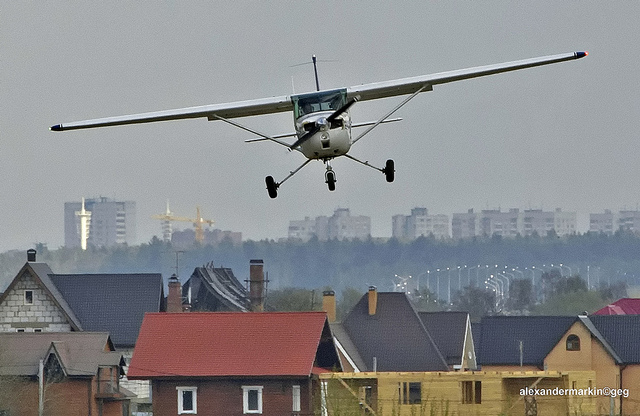
On Thursday afternoon, The Wall Street Journal published a report saying that the US Marshals Service (USMS) was using small, fixed-wing Cessnas equipped with so-called “dirtboxes”—receivers that act like cellphone towers—to gather data from citizens' phones below. The purpose of such collection is to target and spy on criminal suspects, but the data from any citizen's phone is collected by such devices.
Sources told the WSJ that USMS operated these planes from five major airports in the US and that the program had a flying range “covering most of the US population.” The devices on the planes can capture unique identifying information from “tens of thousands” of cellphones on the ground. Using that information, federal authorities can pinpoint a cellphone user's location from “within three meters or within a specific room in a building,” the WSJ said.Individuals with knowledge of the matter told the news outlet that the plane flyovers were targeted at “fugitives and criminals” and that non-target phone data is “let go” as it is gathered. The dirtboxes are described as higher-grade Stingrays, which police use on the ground to collect International Mobile Subscriber Numbers (IMSI).
The dirtbox gets its name from the Boeing division that makes them—Digital Receiver Technology or DRT. On its website, Boeing says that DRT creates “a miniature yet powerful receiver measurement capability to test and monitor wireless signals... While other products require multiple scanners linked together to perform similar system measurements, Boeing offers this capability within a single portable product.”
Naturally, secretly gathering phone details from every citizen without their knowledge has civil liberties experts concerned. For one thing, it seems as though DRT's product can capture many more unique identifying numbers at one time than a Stingray can. Nate Wessler, a Staff Attorney for the American Civil Liberties Union, told Ars in a phone conversation that the application of a more powerful device “goes to the question of whether the search is reasonable under the Fourth Amendment.” With tens of thousands of cellphones contacting these dirtboxes, judges may be approving searches that are overly broad.
Former US magistrate judge and current law professor at Indiana Tech Brian Owsley expressed a similar concern: "Regarding using planes as cell towers, that is problematic in my opinion. It strikes me as analogous to the use of Stingrays. Therefore, I think the government would need to obtain a search warrant based on probable cause consistent with the Fourth Amendment," Owsley wrote to Ars in an e-mail.
"I think the growth of the use of drones will further exacerbate this problem," he added.
Although the WSJ's sources said that the dirtboxes are operated within the bounds of federal law by seeking a court order before taking them into the field, judges may not know exactly what they're approving when they permit the government to use the devices, either. As Wessler explained, “based on what we know from applications to use the other forms of trackers—the smaller, less powerful devices—I would guess that there have been cases where the government has not provided a full or accurate description [to judges when seeking a warrant].” Instead, with Stingrays and other lower-power devices, the government has told judges that they're going to use a “mobile locator tool or a mobile tracking tool, which provides no information about how they... sweep up information.”
The WSJ's sources said that the Cessna flights take place “on a regular basis,” but to keep costs down “the flights usually target a number of suspects at a time, rather than just a single fugitive.”
In order to force cellphones below to connect to the dirtbox in the plane, the device ”identifies itself as having the closest, strongest signal, even though it doesn’t, and forces all the phones that can detect its signal to send in their unique registration information,” the WSJ wrote. “Phones that are turned on, even if not in use, would 'ping' the flying device and send their registration information.” Like newer Stingrays, newer dirtboxes can also intercept certain communications—in the dirtbox's case, signals can be jammed and texts or photos can be gathered. The device can also interrupt calls on certain phones when in use, a result that authorities have tried to keep from happening “to minimize the potential for harm,” in a 911 situation, for example.
A Verizon spokesperson told the WSJ that it was unaware of the program but that “The security of Verizon’s network and our customers’ privacy are top priorities." Ars contacted Verizon for further information and the company reiterated that position. AT&T told Ars that it had no comment.
Ars has contacted the Department of Justice for comment and will update if we receive a response. The US Marshals Service referred us to the Department of Justice Public Relations office and said that its policy was to refrain from comment.
reader comments
107